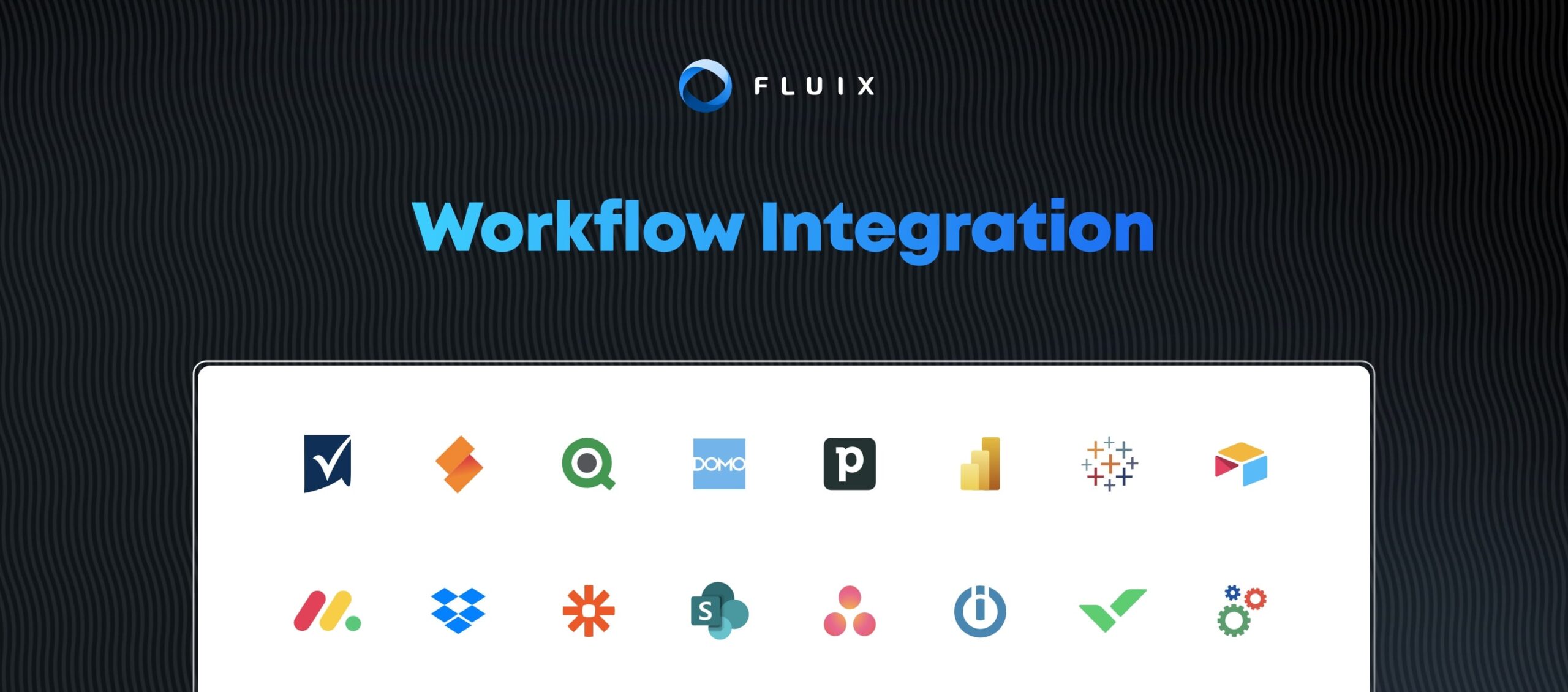Automation can help businesses to operate more efficiently and achieve better bottom-line results. However, establishing automated workflows is often easier said than done, especially when custom tools need to be created. The answer for many businesses is a no code/low code workflow automation tool that offers all the advantages of custom software without the drawbacks.
The Benefits of Business Automation
There are a lot of reasons to consider automating workflows in your business. Although it may take some time, effort and money to establish new, automated workflows, the benefits substantially outweigh the costs.
- Greater Productivity: Automation is an excellent way to get more done in less time. With automated workflows, your team can allow computing power to handle a lot of the minutia of operations. Thus, the people can spend more time focusing on what they excel at, meaning that they get more work done and help the business reach its goals.
- Simplified Human Workflows: By automating many of the steps of your workflows, you can cut down on the complexity that workers need to deal with. Although the process as a whole may not be any simpler, the parts that people are directly handling are. Thus, their work is made easier, more streamlined and less frustrating.
- Fewer Mistakes: A lot of errors are caused by inattention, rushing or data entry mistakes. These can be largely avoided through automation. First, the computer system will not make errors in the workflow. Second, the forms and documentation used in the workflow can be validated to avoid mistakes, such as entering a value into the wrong field or failing to complete a field.
- Less Expensive To Operate: Although there may be an initial investment involved with switching to automated workflows, they are typically less expensive to operate long term. Thus, many businesses make back their initial investments quickly in both cost savings and increased productivity.
- Opportunities for Redundancy, Optimization and More: Finally, working with a computer-based workflow can mean opportunities to build in redundancy, optimizations and other improvements. Actively managing your processes is usually better than just letting them run themselves.
All the above advantages make automation very worthwhile. However, many organizations are still left with the challenge of how to start. Fortunately, no code/low code platforms can help.
What Is No Code?
The name sort of says it all. No code is a technology that allows you to build custom software without needing to write any code yourself. For example, the right platform allows you to make automated workflows without having to write the software yourself.
Typically, no code solutions are more limited in scope than what you may be able to achieve by programming the software yourself. However, you may be surprised at the flexibility of some platforms, especially in their intended use cases.
No code solutions are offered for a wide array of software development needs. For example, they are common in web design. No code website builders allow designers to make impressive sites without ever writing a line of code.
What Is Low Code?
Low code is a similar concept to no code except that, as the name suggests, there is a small amount of programming involved. Typically, low code means that creators can design algorithms using a simplified form of programming. For example, if you have ever created a formula in an Excel spreadsheet, that can be considered low code. It is writing simplified code without all the complexity that normally accompanies building bespoke software.
Many platforms offer options for both no code and low code development. Thus, users can select the balance of ease and flexibility that works for them.
How Low Code/No Code Automation Can Drive Business Success
Using low code/no code solutions for automation can help businesses to thrive. Whether being implemented by your business’s IT professionals or other team members, this approach to automation has a lot of benefits.
Fast and Reliable Workflow Automation
Perhaps the most significant benefit of using a low code/no code solution is that your team can automate workflows much more quickly. Rather than needing to build out custom software from the ground up, they can begin creating workflows in the system right away. Thus, the amount of time and money necessary to integrate automation into your operations is significantly reduced.
Furthermore, the right low code/no code automation platform will provide highly reliable functionality. Building high-quality, reliable software is a much higher bar than making something that simply works. If you want your business to thrive and not suffer constant interruptions, you need tools that fit into the former category. Using a low code/no code solution can get you there more easily.
No Need for Special Training or Education
Depending on the solution chosen, pretty much anyone can get started with low code/no code workflow creation. Therefore, the barriers to entry are much lower. You don’t need to hire a programmer to be able to start using this type of platform in your business. While a small amount of training may be needed to get started with the tool, this is typically much less substantial than what would be necessary for creating completely custom software.
Automation in the Hands of Those Running Workflows
Similarly, the low barrier to entry means that many people in your organization can contribute to your workflow automation initiative. Importantly, the people who own the various workflows can make firsthand contributions. This can help to avoid the direct knowledge of your workflows from being lost in translation during the automation process.
Externally Supported Backend
Supporting software is no small undertaking. Even for relatively simple programs, periodic updates are necessary to ensure security, reliability and lasting usability. However, when building automated workflows using a low code/no code solution, you have a third-party supporting the core of your software. Thus, you can offload the majority of the work necessary to keep your business applications running smoothly and securely.
No-Code Automation for Asset Maintenance
RWE Renewables uses Fluix to digitize their field operations across a number of wind farms in different countries


Examples of Low Code/No Code Automation Applications
There are many ways that low code/no code automation can help your business to thrive. The following are a few use case examples:
- Field Inspections: Businesses with substantial assets in the field need effective processes to inspect and maintain those assets. With a low code/no code platform, team members can create automatic workflows that deliver field reports to appropriate managers. When there is an issue marked in the report, it can be automatically turned into a work order for a repair. If there is a critical issue, it can also be brought to the attention of decision-makers to determine what to do next.
- Onboarding and Training: Most organizations have fairly standardized processes for onboarding new team members. However, these workflows are often handled manually. By automating them, you can greatly accelerate the process of onboarding. This also allows new team members to enjoy a more self-paced style of training. Resources can be delivered automatically, and paperwork can be filed right after it is completed, saving time and effort.
- Audits and Compliance: Ensuring compliance in an organization can be a complex workflow that is prone to errors. Automating the process of completing and capturing regulatory forms can greatly improve the results of compliance work. Plus, the results can be automatically delivered to auditors when needed.
- Approvals: Internal approval workflows can sometimes be slow and laborious. They can often be held up simply by someone forgetting to forward the document to the next individual in the chain. By automating the process, managers only need to review and approve or reject the proposal. All the document handling is managed automatically. Plus, it can be easily looped back for further review if changes are needed.
Current Low Code No Code Trends
Perhaps the most important trend in low code/no code software is its current rate of adoption. More and more organizations are implementing these solutions as a middle ground between the rigidity of out-of-the-box software and the complexity of custom software.
Most businesses have similar needs for onboarding, for example. However, each may have a few unique requirements. By using a low code/no code platform, they can create software that perfectly matches their needs rather than overshooting those needs (and overspending) just to get a single niche feature.
Furthermore, there are a growing number of solutions that offer low code/no code functionality for different applications. Whereas one may help with document workflow automation, another may be focused on project management.
These platforms have also been getting significantly better in terms of quality. Not long ago, no code/low code software tended to produce very low-quality, messy code. Thus, trying to use such an editor meant that the end result would be bad. However, in recent years, the quality of these platforms has improved significantly, allowing businesses to create reliable, high-quality apps and workflows using low code/no code.
Another significant trend in this field has been the impressive and widespread results. From retail to energy to manufacturing, low code/no code solutions have helped teams to increase efficiency. These results are likely to lead to further adoption and more investment in low code/no code platforms.
How Low Code/No Code Software Can Help Your Business
The value proposition for low code/no code solutions is clear both based on theoretical benefits and real-world results. However, these advantages depend significantly on the implementation of the solution at your business. If you choose the wrong low code/no code software, you may not be able to fully realize the benefits.
The requirements are going to be a little different for every business and use case. However, it is typically best to find a platform that emphasizes simplicity and a strong user experience. Some platforms are designed with less emphasis on UX and, consequently, can be difficult to understand and use.
Additionally, it is often beneficial to find a solution that fits closely with your needs. If your goal is to automate document workflows through your business, using a platform focused on this will be easier than trying to implement the same solution with a more general platform.
How To Get Started With Low Code/No Code Software
Fortunately, getting started with low code/no code software is quite easy. Most platforms have plenty of information about how to build functionality using their software. Consider taking a training course or two to learn the ins and outs of the platform before beginning. Many solutions are designed such that this isn’t necessary. Nonetheless, it can be a beneficial idea.
It is likely a good idea to start simple and master the basics before moving on to more complex implementations. Additionally, it is typically valuable to map out the workflow before trying to create it in the platform. This will help to guide your process of creating automation using the platform. You may be surprised by how easy it is to get started once you have learned just a few basics.
Use Fluix To Build Automated Workflows With No Code Needed
Fluix is a document workflow automation platform that allows you to create workflows with no coding necessary. It is an excellent example of how powerful no code/low code platforms can be. By automating your workflows, you can increase productivity, reduce errors, cut costs and improve your bottom line.
Explore the full feature set of Fluix today. Chances are that there are applications for it in your business that could benefit from its automation capabilities. With the simple, visual workflow creator, you can get started even if you have never written a line of code in your life. Try it free and see what you can create.







